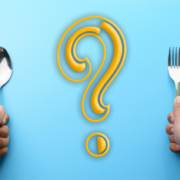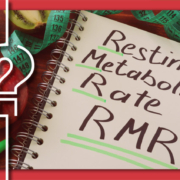Your Holiday Eating Plan
Over the years, the topic of “How should I eat during the holidays?” comes up over and over. We all want to try to avoid gaining the five to ten pounds during the weeks from Thanksgiving through New Year’s. Depending on your activity levels during the past year and a half with COVID restrictions, you may already be dealing with some extra weight. I think there are two parts to the solution of preventing weight gain during the holiday season.
Increase or Begin to Exercise
In my experience working with people, the holidays are so busy they stop doing what can help deal with stress and extra calories: exercise. Even a 20-minute interval session (found in the Basic Health Info section on drchet.com) can do wonders for relieving stress, and that may help you eat less when those extra calories are available. Or when it all gets to be too much, declare it’s time for your walk and take off.
Exercise isn’t designed to burn a lot of calories unless you really work out strenuously or work out for hours, but it helps keep your metabolism going: you use up your short-term fat storage, and your muscles continue to use energy to recover. It’s an effective way to help prevent weight gain.
Have an Eating Plan
The most important way to eat during the holiday is to have a plan. Strategize. You know when the holiday foods, treats, and goodies are going to be available; decide how you’re going to approach them. Here are the three most popular ways people have said they use.
To Here and No More
Many people decide in advance what and how much they will eat whether at parties or holiday meals. Maybe someone makes the best taquitos you’ve ever eaten and you want to have several. That’s fine. Skip other calorie-laden treats such as the cookies you’re not crazy about and opt for calorie-free drinks instead of calorie-heavy alcohol. Hosts will never be offended when you turn down a drink because you need to save room for the stupendous taquitos.
Another example: Paula and I almost never make cookies other than for the holidays—and when we make them, we’re going to eat our share. Baking days include a lot of soups and salads rather than heavier meals to at least partially make up for all the cookie calories.
Be wary of two things: sugar and salt. Both make you crave more so when you set a limit, you have to stick to it.
Just One Meal
Let’s face it: like Thanksgiving, most holiday gatherings center around one meal. Eat everything you want but in smaller quantities. This is similar to the first approach, but involves more foods you might only get at the holidays: oyster stuffing, gravy with mashed potatoes, or Mom’s special dessert. Eat the foods you love but in reasonable quantities. You can eat more lightly the day before and day after to compensate.
Stay the Course
You’ve worked hard to get your weight to where you want it to be, so you decide to stick to your meal plan. Adjust it to account for the holiday foods but don’t deviate. All foods count; stick to what has worked for you.
One more point: forgive yourself if you fall off the plan. It happens. Put it behind you and get a fresh start the next day.
The Bottom Line
The idea of holiday gatherings is to enjoy the company of others, and part of the celebration is food and drink. Decide on an eating plan, stick as close as you can to your workout plan, and you may not have to start the year by resolving to lose what you gained over the six weeks of the holiday season.
What are you prepared to do today?









